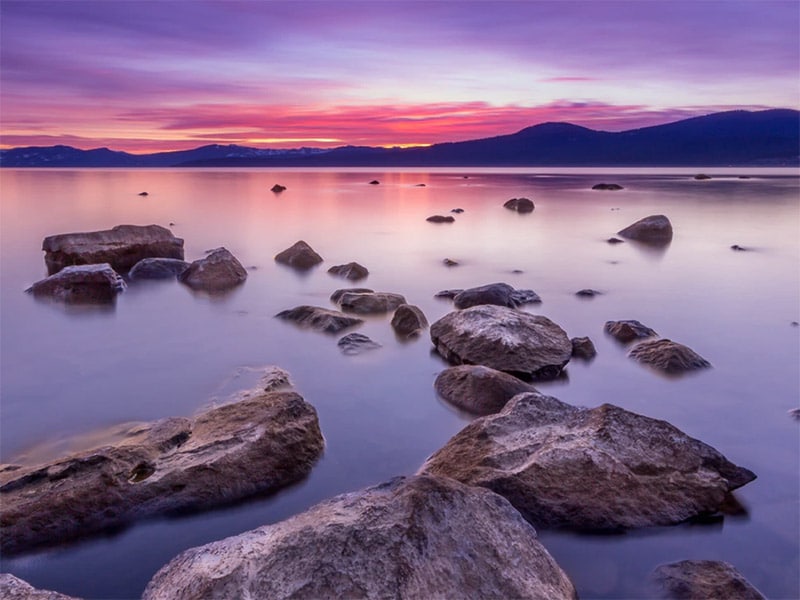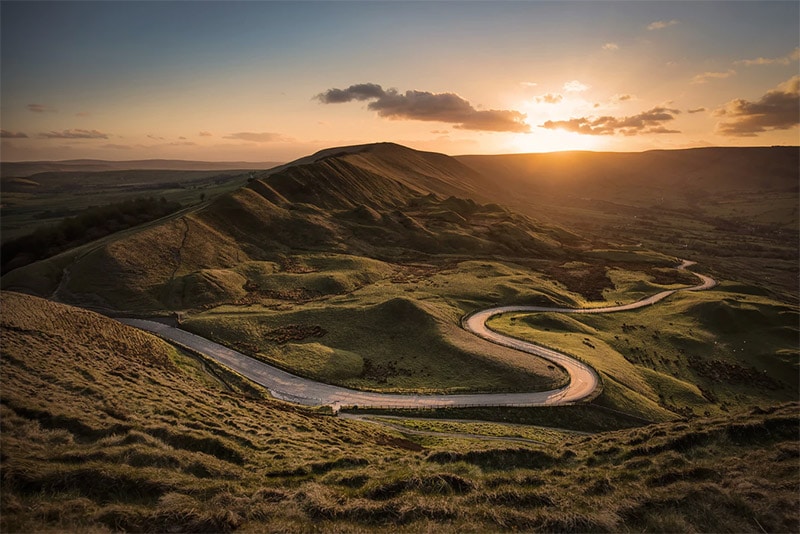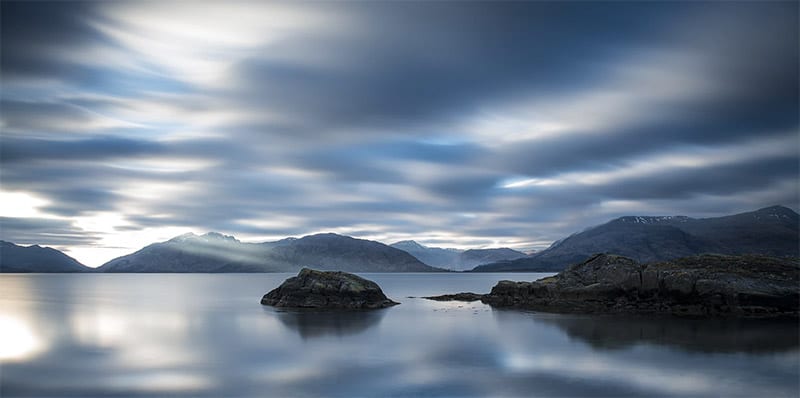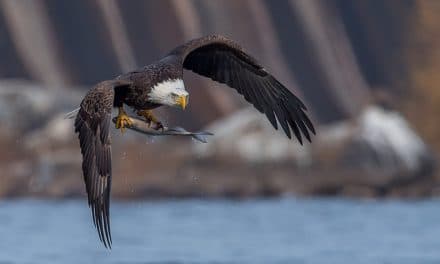Want to take great landscape photos? Of course you do (we all do)!
Sometimes it can be overwhelming with so many things to keep in mind when you are photographing. But when it comes down to it, there are really just a few elements that make or break most landscape and nature photographs.
If you focus on the five elements that are covered here, you’ll be well on your way to amazing photos that you can be proud of.
1. Lighting
Good lighting is essential for photography, and this is especially true with landscape and nature photography. It doesn’t matter how beautiful the location is, if you’re trying to photograph it in bad lighting conditions, the results are not going to be great. And amazing lighting can turn even average scenes into beautiful photographs.
Of course, lighting and weather aren’t exactly within your control, but you can put yourself in position to have the best chance for good lighting and to be ready when the situation occurs.
The best lighting conditions usually happen around sunrise and sunset, when the sun is hitting the earth at a nice angle. Golden hour (after sunrise and before sunset) will usually produce a warm golden glow that makes just about any landscape look better, and blue hour (before sunrise and after sunset) will often produce the best and most vibrant colors in the sky.
Generally speaking, you can get the best light by taking advantage of golden hour and blue hour. Plan your outings and these times and try to avoid harsh midday light, which will not be flattering for your photos.
A big part of success as a landscape photographer is patience and persistence. You may need to go back to the same spot several times before you get the right lighting, or you may need to stay in one spot and wait for the lighting to improve in order to get the best photo.
2. A Subject
The best landscape and nature photos will have a clear subject or focal point. This may sound obvious, but I think most of us often fall into the trap of photographing a beautiful landscape without giving much thought to the specific subject of the photo.
Photos without a clear subject can be boring and forgettable. If you want to have an impact with your photos, make sure to take your time and establish a clear subject for each photo. Don’t simply rely on the beauty of a scene to lead to a great photograph.
3. Composition
The same scene photographed in different ways can produce very different results. If you want to take your photography to the next level, work on improving your composition skills.
In my opinion, composition is one of the harder things to learn if you struggle in that area (like me). Fortunately, there are a lot of tricks and rules that you can use to help you create interesting compositions. Here are a few things that you can try:
Foreground Interest – Look for things that you can use as foreground elements in your compositions. It could be a rock that is close to you in a stream when you are photographing a waterfall, some wildflowers in a field with impressive mountains in the distance, or anything else in the foreground that will catch the attention of viewers.
Leading Lines – You can use lines in a composition to guide and direct the eye of viewers. The lines can be natural (like the peaks of sand dunes or lines in a stone) or man-made (like a bridge, fence, or building). Find angles and perspectives that use leading lines to make your images a compositional masterpiece.
Rule of Thirds – The rule of thirds can be helpful for aligning the objects in a photo in a way that will create a visually pleasing composition. If you were to lay a grid over the photograph, the rule of thirds says that you should place the focal point of subject one-third of the way into a photograph, rather than directly in the center. The red crosses on the image below show the sweet spots. Most cameras have a setting that will show a grid overly to help when you are taking a photo.
4. Focus
The sharpness and focus of a landscape photo is absolutely critical. In most cases, you’ll want as much of the photo as possible to be in sharp focus. You can do this by selecting an aperture that gives you the greatest depth of field (it will depend on your lens, but somewhere around f/11 – f/16 is usually going to produce the sharpest photos).
Of course, there may be times when you want to use a lack of focus, like background blur, for a creative effect. For example, if you are photographing a flower and you want the background to be blurred. Using a larger aperture (smaller f/stop number can help with this).
5. Lack of Distractions
While it may not be the most obvious element of a successful landscape photo, a lack of distractions is important. Ther are a few ways that photo scan fail in this area.
First, unimportant details or clutter around the edges of your photographs can be very distracting. Try to compose your photos so the edges are clean and free of distractions. At times, you may need to use Lightroom or Photoshop to clean up the edges a little, such as removing a stray branch that is poking into the frame.
Second, pay attention to the background of your photos. The subject of the photo tends to get the most attention, but be sure that the elements in the background are not distracting or taking away from the subject. If they are, find another angle or alter the composition to get rid of the background distractions.
Some Other Optional Elements That Can Create Powerful Images
The five elements listed above are a must-have for just about any good landscape photo, but there are some other elements that can be extremely powerful and effective as well. The three elements listed below will be essential for every photo, but they can be very effective when used at the right time.
1. Mood
Mood can be a very powerful way of creating landscape and nature photos that stand out. There are several different ways that you can create mood, like:
- Photographing in the fog
- Using a minimalist approach to composition
- Processing your photos in black and white
- Working with shadows
- Photographing during storms
To learn more, please read How to Capture a Mood in Landscape Photography
2. Color
Color can be used in a few different ways. You could photograph during lighting conditions that were mentioned earlier (golden hour and blue hour) to get beautiful color in the sky. You could photograph during peak fall foliage to capture stunning reds, yellows, and oranges that will transform a landscape. You could photograph in spring when everything is green and vibrant. Or you could process your photos in black and white to remove the color.
3. Movement
With most landscape photos, you’ll probably want sharp and crisp photos. But in some cases, you may want to use slower shutter speeds or long exposures to blur the image and show movement. For example, you may want to blur rushing water, moving clouds, or running wildlife.
While landscape photography can be overwhelming at times when you are trying to learn, if you break it down to the essential elements, there really aren’t that many things that you need to worry about. Pay attention to the five important elements covered in this article and you’ll see that creating beautiful landscape photos isn’t as complicated as you might have expected.
Photo license links: CC BY 2.0, Pexels License, Unsplash License,





















Marc – one small point – sharpness is also dependent on the camera format – f16 on any m43rds camera is pushing it, more so if in combination with a slow lens.
Good point Steve. Thanks.